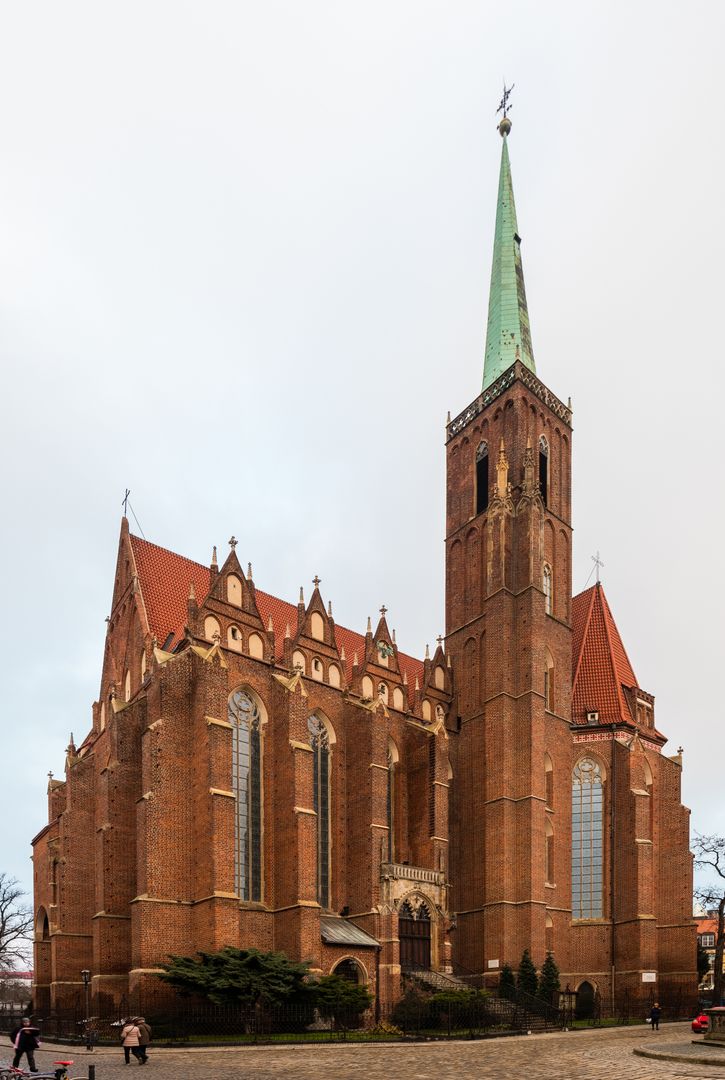The Collegiate Church of the Holy Cross and St. Bartholomew in Wrocław
6.63

Overview
The Collegiate Church of the Holy Cross and the Church of St. Bartholomew in Wrocław is a Gothic temple located on Ostrów Tumski, serving as a significant historical and architectural landmark in the region. It was founded in 1288 by Duke Henryk Probus as part of an agreement with Bishop Tomasz II. The church was designed by Master Wiland, and construction began with the presbytery, which was completed in 1295. The interior of the church is two-storied, a unique feature in Silesia, with the lower church dedicated to St. Bartholomew and the upper church dedicated to the Holy Cross. The structure takes the form of a Latin cross, with a three-sided apse at the presbytery and transept, and a hall-like layout of the naves, where the taller central nave is characterized by double-length vaults. The church boasts impressive dimensions: 66 meters in length, 44 meters in width, and 19 meters in height. The interior includes significant decorative elements, such as a foundation tympanum depicting the Holy Trinity. An interesting fact is that Nicolaus Copernicus was among the canons from 1503 to 1538, and a record by Andrzej Bogurski ensured that sermons in Polish would be preached in the church until the end of time. The church underwent numerous transformations, including Baroque renovations in the 17th century and an unsuccessful adaptation into a museum in the 1950s, which was abandoned after the dismissal of Father Kazimierz Lagosz. The lower church still houses organ pipes built in 2001 by the company of Remigiusz Cynar. Today, the church remains an important site for the culture and history of Wrocław, attracting tourists and architecture enthusiasts.
Location
Tickets
Powered by GetYourGuide
2025 Wizytor | All Rights Reserved